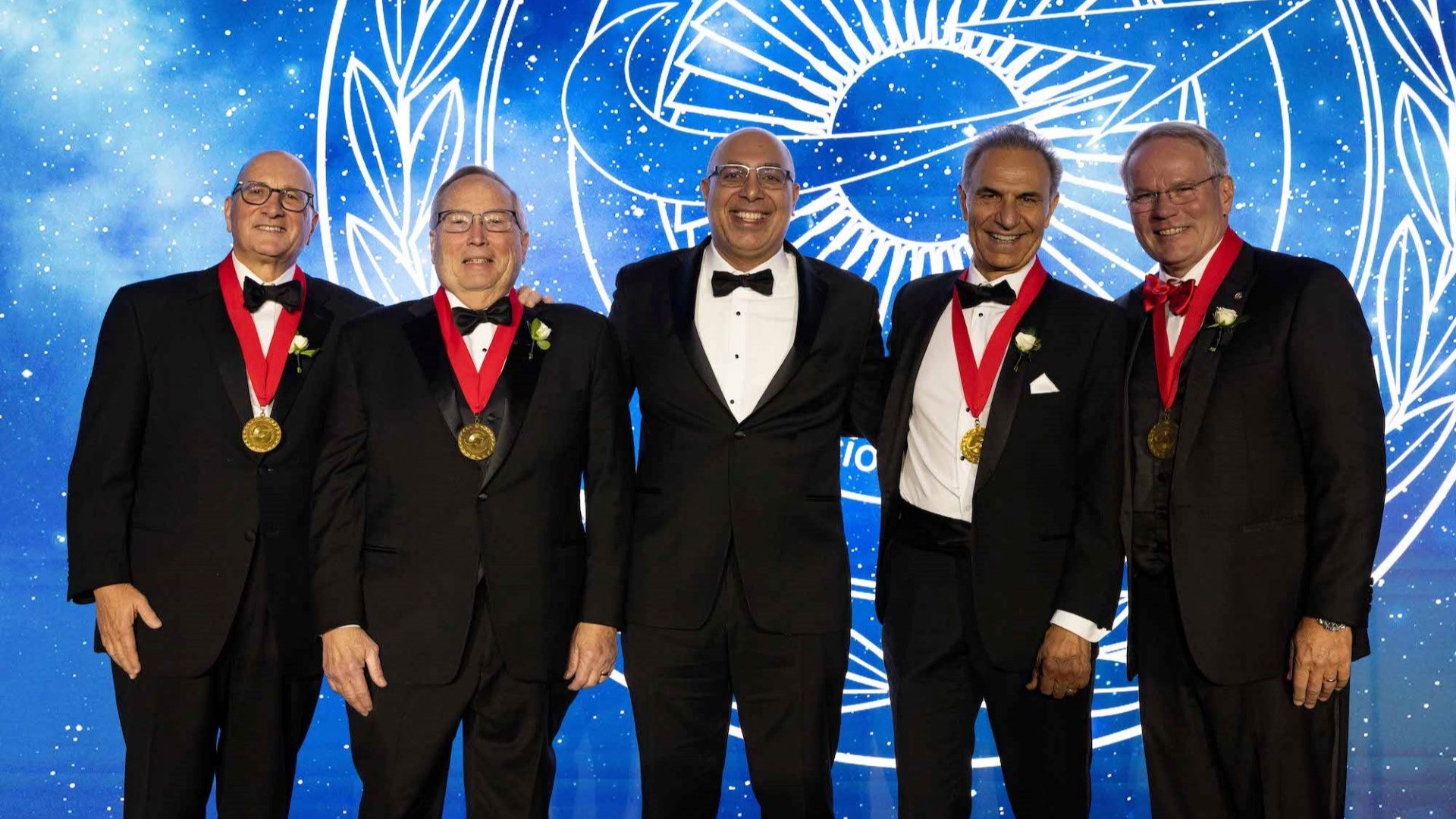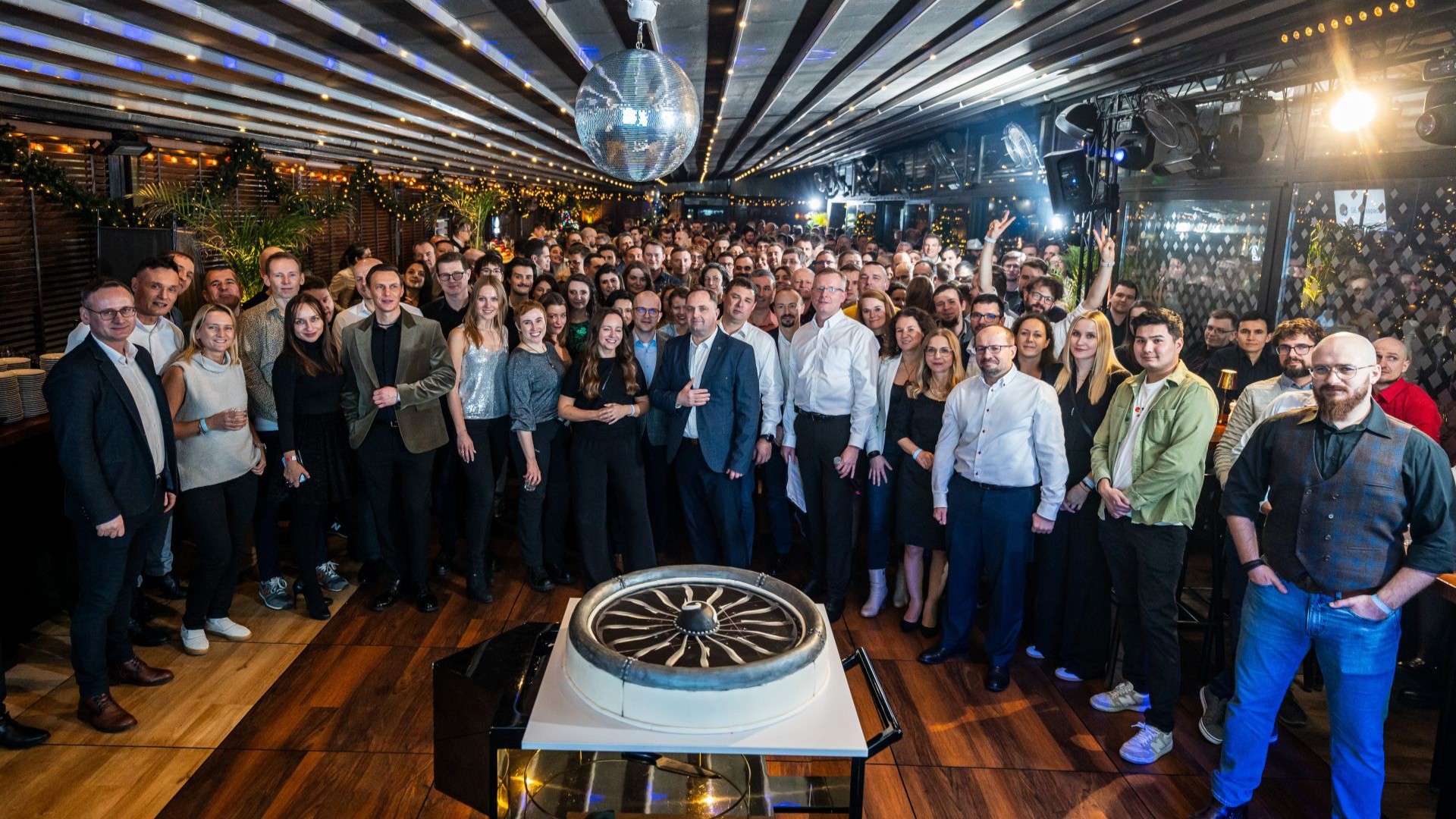Reimagining Flight: GE Aerospace Propulsion Hall of Fame Inducts Five New Members
October 14, 2024 | by Jay Stowe
Every five years or so, GE Aerospace pays homage to those who have significantly influenced both the company and the broader aerospace industry by inducting them into the revered GE Aerospace Propulsion Hall of Fame.
Since its inauguration by Brian H. Rowe in 1982, 151 aviation pioneers have joined this elite cohort, including the five new members who were inducted at a ceremony last week.
Each honoree is chosen based on the impact they made within the company and the industry at large over the course of their careers. Induction into the Propulsion Hall of Fame is one of the highest honors within the company.
“The Propulsion Hall of Fame recognizes leaders who have pushed the boundaries of flight and driven generational advancement in propulsion technology,” said Mohamed Ali, senior vice president of engineering at GE Aerospace. “We stand on the shoulders of these giants and continue to leverage their learnings in the products we have in the fleet today. This event is a culmination of their work and dedication to inventing the future of flight, lifting people up, and bringing them home safely.”
Propulsion Hall of Fame 2024 Inductees
The 2024 inductees included former GE Aviation CEO David L. Joyce, as well as Chaker Chahrour, Eric Ducharme, Mohammad Ehteshami, and Richard (Rick) Russell.
• David L. Joyce started his career as a design engineer and ultimately served as CEO of GE Aviation for 12 years, leading the company through an enormous period of growth — ushering in new products across airplanes and engines, renewing the aviation division’s product portfolio, and solidifying the company’s industry-leading jet engine position in commercial and defense for another generation. Under his watch, the company launched the CFM LEAP engine program with Safran Aircraft Engines and extended its 50-50 joint partnership in CFM International to 2040; debuted the GE9X high-bypass turbofan; secured the contract to re-engine the U.S. Army’s Black Hawk and Apache helicopters with the T901 turboshaft engine, as part of the Army’s Improved Turbine Engine Program; and introduced the company’s purpose statement: to invent the future of flight, life people up, and bring them home safely.
• Chaker Chahrour played a crucial role in two of the most successful engine programs in GE Aerospace history: the GE90-115B and the CFM LEAP family of engines. His technical expertise combined with his talent for cultivating strong customer relationships secured these engines on key aircraft programs and garnered record orders, establishing GE Aerospace as a leader in commercial aviation. Over his 40-year career, he served as general manager of the GE90 engine program, CFM International executive vice president, and Asia-Pacific sales general manager. And as vice president of global sales and marketing and a GE corporate officer, he steered the team to win more than $22 billion in sales of commercial engines and services over five years, generating a hefty order backlog that will generate a strong revenue stream for years to come.
• In his 33 years at the company, Eric Ducharme served multiple roles, including chief engineer, leader of Commercial Engines Engineering, and head of Advanced Technology Operations. His contributions to technology development, new product introduction, and safety impacted some of the company’s most successful commercial engine programs. At different points in a varied career, he did significant work on the development of swept composite fan blades, which were introduced on the GE90 engine, a first for the aviation industry; oversaw systems engineering for the introduction of the GEnx and GP7200 engines; and led the engineering operations behind the introduction and certification of the CFM LEAP, Passport, and GE9X engines. He also led the push to implement the company’s industry-leading Safety Management System, as well as an enhanced rotating parts inspection program.
• Over the course of his 35-year career, Mohammad Ehteshami held a number of leadership positions at GE Aerospace. As vice president of engineering, he led a team of more than 8,000 engineers across numerous engine programs, including the CFM LEAP, GEnx, and GE9X on the commercial side and the XA100 and T901 on the military side. His team also developed and certified the GE Honda HF120, Passport, and LM9000 aeroderivative engines. His drive for innovation led to the development and implementation of new technological processes, such as bimetal welding of rotating parts, double annular combustors, and ceramic matrix composites. He was also a pioneer in additive manufacturing, overseeing the integration of additively manufactured fuel nozzles in the CFM LEAP engine and other parts in the T901 turboshaft engine, and serving as the first CEO of GE Additive (now known as Colibrium Additive).
• Richard (Rick) Russell began his 38-year career at GE Aerospace as a program engineer, working on numerous commercial and military engine programs, including the F100, TF39, CF6, F101, and GE13. After advancing into leadership and management roles in cycle systems design, performance analysis, and derivative and production engine systems, he served as a performance program leader, where he was instrumental in the design, certification, and in-service excellence of the CFM56 and GE90. He later served as the manager of preliminary new engine design. His drive to focus on the needs of the customer when it came to overall engine design led to world-class thrust capability, fuel burn performance, and durability in the CFM56, GE90, GEnx, and CFM LEAP engine lines and contributed to the preeminence of GE Aerospace in the aircraft engine business.
The induction ceremony took place on October 10 at the Brian H. Rowe Learning Centre, on the GE Aerospace campus in Evendale, Ohio. This was fitting, considering that Rowe was keen to honor those who came before him — and after him — at GE Aerospace.
As he wrote in his autobiography, “If it hadn’t been for people like Sir Frank Whittle, Dr. Hans von Ohain, and Major Frank Halford in the beginning, and many others such as Gerhard Neumann and Jack Parker, as well as people at Rolls-Royce, Bristol, deHavilland, Westinghouse, Curtiss-Wright, and Pratt & Whitney, we would not even have a business.”
Top, from left: GE Aerospace Propulsion Hall of Fame inductees David L. Joyce and Rick Russell; Mohamed Ali, senior vice president of engineering; and inductees Mohammad Ehteshami and Eric Ducharme. Chaker Chahrour was not in attendance.




